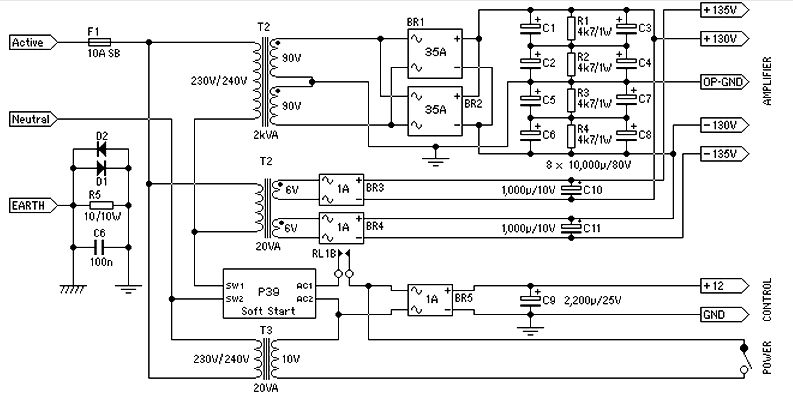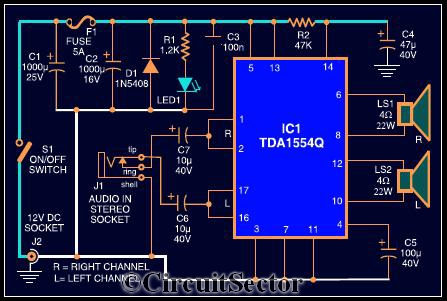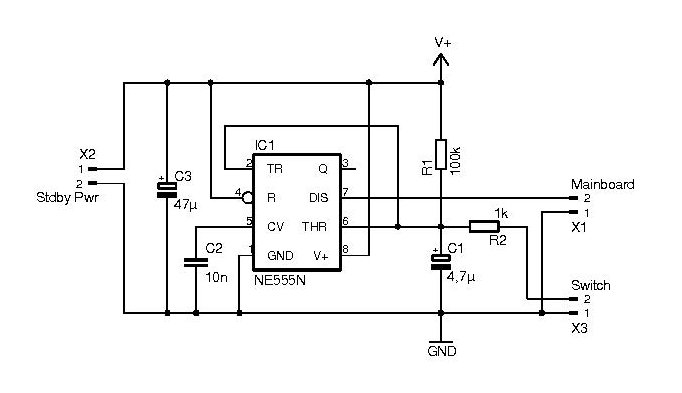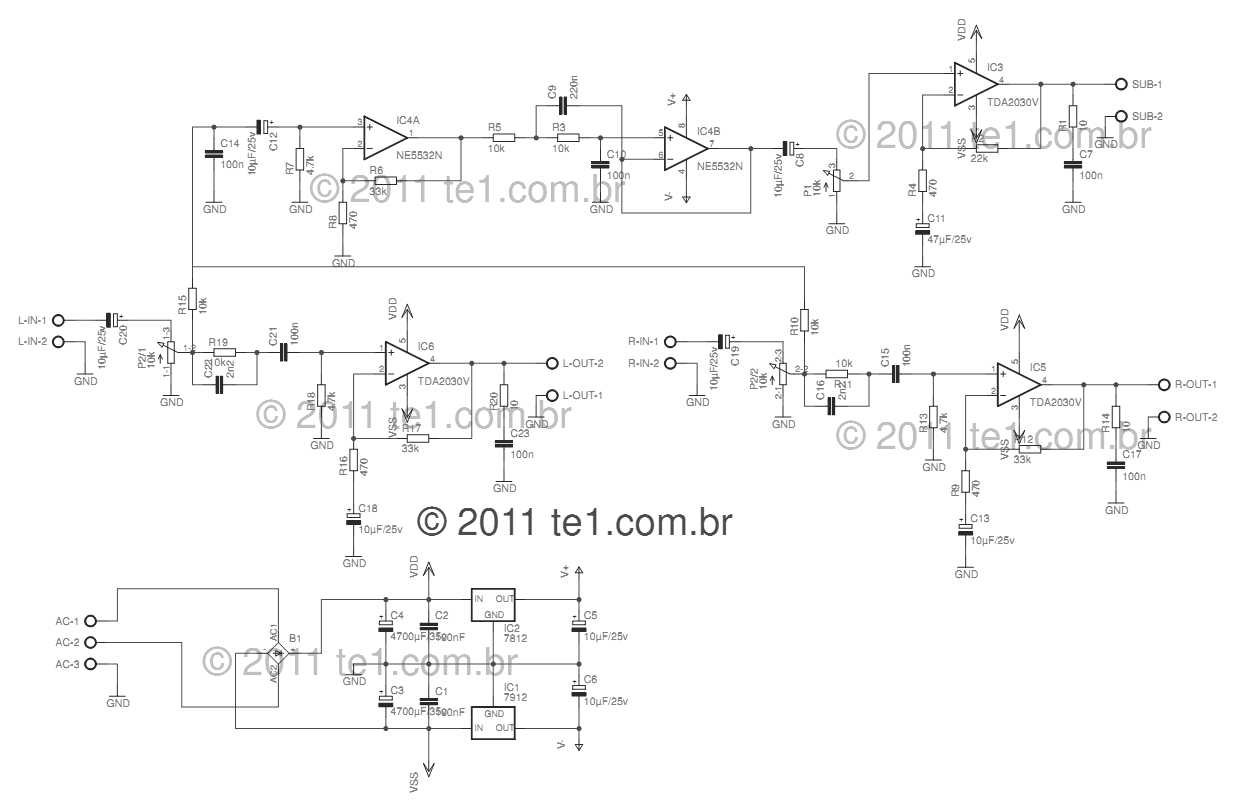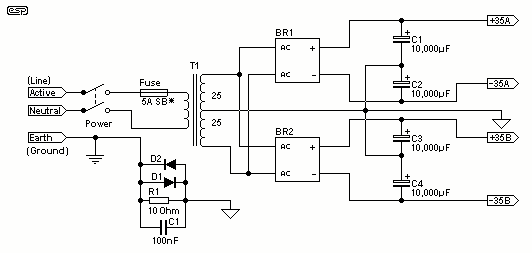
lm317 variable power supply
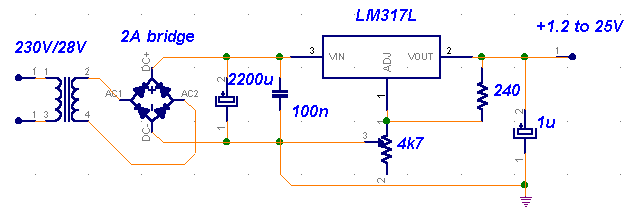
The LM317 is a versatile and efficient voltage regulator capable of delivering an output voltage range of 1.2V to 37V and a maximum current of 1.5A when used with an appropriate heat sink. This circuit is suitable for a wide range of applications and serves as an excellent workbench power supply.
The LM317 voltage regulator circuit is designed to provide a stable output voltage that can be adjusted according to the requirements of the application. The circuit typically consists of the LM317 integrated circuit, input and output capacitors, and resistors for setting the output voltage.
The input voltage must be higher than the desired output voltage by at least 3V to ensure proper regulation. The LM317 requires a minimum load current to maintain regulation, which can be achieved by connecting a load resistor if the actual load is too light.
For voltage adjustment, two resistors are connected in a voltage divider configuration between the output and the adjustment pin of the LM317. The output voltage (Vout) can be calculated using the formula:
Vout = 1.25V * (1 + R2/R1) + Iadj * R2
Where Iadj is typically very small and can often be neglected for most applications.
Input and output capacitors are recommended to ensure stability and transient response. A typical configuration might include a 0.1µF ceramic capacitor at the input and a 1µF tantalum capacitor at the output.
The LM317 is housed in a TO-220 package, which allows for easy mounting on a heat sink, ensuring that it can dissipate heat effectively during operation. This is particularly important when operating at higher currents, as excessive heat can lead to thermal shutdown or damage to the regulator.
In summary, the LM317 voltage regulator circuit is a robust solution for providing adjustable power supply voltages in various electronic projects, making it a staple component for hobbyists and professionals alike.A truly timeless circuit. LM317 is a versatile and highly efficient 1.2-37V voltage regulator that can provide up to 1.5A of current with a large heat sink. It`s ideal for just about any application. This was my first workbench power supply and I still use it.. 🔗 External reference
The LM317 voltage regulator circuit is designed to provide a stable output voltage that can be adjusted according to the requirements of the application. The circuit typically consists of the LM317 integrated circuit, input and output capacitors, and resistors for setting the output voltage.
The input voltage must be higher than the desired output voltage by at least 3V to ensure proper regulation. The LM317 requires a minimum load current to maintain regulation, which can be achieved by connecting a load resistor if the actual load is too light.
For voltage adjustment, two resistors are connected in a voltage divider configuration between the output and the adjustment pin of the LM317. The output voltage (Vout) can be calculated using the formula:
Vout = 1.25V * (1 + R2/R1) + Iadj * R2
Where Iadj is typically very small and can often be neglected for most applications.
Input and output capacitors are recommended to ensure stability and transient response. A typical configuration might include a 0.1µF ceramic capacitor at the input and a 1µF tantalum capacitor at the output.
The LM317 is housed in a TO-220 package, which allows for easy mounting on a heat sink, ensuring that it can dissipate heat effectively during operation. This is particularly important when operating at higher currents, as excessive heat can lead to thermal shutdown or damage to the regulator.
In summary, the LM317 voltage regulator circuit is a robust solution for providing adjustable power supply voltages in various electronic projects, making it a staple component for hobbyists and professionals alike.A truly timeless circuit. LM317 is a versatile and highly efficient 1.2-37V voltage regulator that can provide up to 1.5A of current with a large heat sink. It`s ideal for just about any application. This was my first workbench power supply and I still use it.. 🔗 External reference
